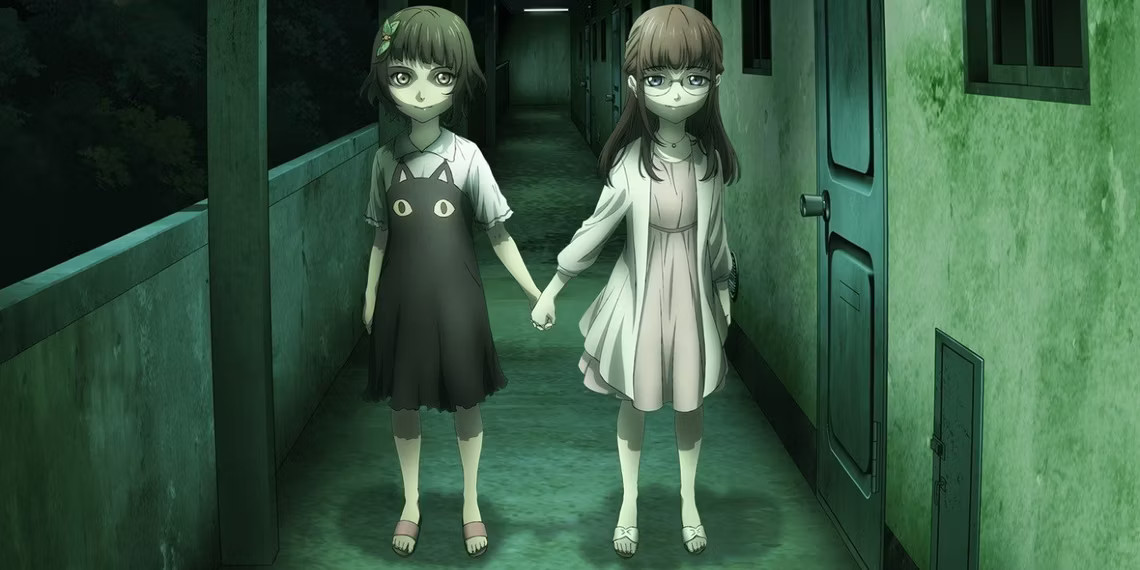Horror in Anime: How Animation Transports Deepest Fears onto the Screen
Playing with Fears: The Dark Magic of Horror in Anime
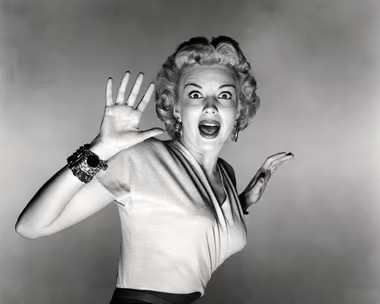
However, it's vital to recognize that creating horror in animation is a challenge arguably more complex than in traditional live-action films. Animated characters, while expressive, often lose that tangible sense of threat easily conveyed by real actors in real settings. What comes naturally in live-action – the palpable fear and authenticity – in animation, becomes an object of deeper analysis and construction.
Reflecting on how two-dimensional characters can be transformed into genuine mediums of fear, it's intriguing to explore what makes horror in anime so unique, and how the creators of these works tackle the challenges presented by this distinctive format.
Challenges in Crafting Anime Horror
 The Security Quandary:
The Security Quandary:
In the world of horror, the sense of threat is key. For many, animation is synonymous with childhood, fairy tales, and innocence, establishing a perception barrier. For viewers, it's harder to believe that hand-drawn characters can pose a genuine threat. Stepping outside the movie's environment, it's challenging to envision an animated monster or villain suddenly infiltrating our reality. This separation makes it harder to achieve the effect of tangible, immersive fear.
Lost in Two-Dimensionality
One of the biggest challenges in animation is representing a convincing world bound to a two-dimensional plane. In live-action films, three-dimensional characters and surroundings naturally give depth and spatial realism, making the world more genuine and frightening. In animation, creators need to employ creative techniques to imbue depth and a realistic appearance to characters and their environments to make them menacing.
 The Authentication Challenge
The Authentication Challenge
In live-action movies, realistic blood, wounds, and facial expressions can be easily portrayed with makeup, props, and special effects. In anime, crafting a realistic blood or injury effect is more intricate and demands a different approach. While not impossible, it necessitates greater effort and creativity.
Technical Constraints
In animation, every movement, every facial expression must be designed from scratch. There's no room for improvisation, unlike with actors. This means that every step, every character reaction needs careful planning, which might hinder spontaneity and authenticity.
Contrast & Aesthetics
While live-action films can employ natural lighting, textures, and details to evoke a dark atmosphere, animation relies more on color contrasts, lines, and composition. What might be subtle and realistic in a live-action movie often needs to be exaggerated in animation to achieve the desired effect.
Key Elements for Effective Anime Horror
 Atmosphere - The Essence of Unease: In horror anime, atmosphere plays a pivotal role in inducing a sense of dread. Thanks to its versatility, animations have the capability to create dreamlike landscapes and shadowy settings, challenging to reproduce in conventional films. Sound and music, when well-composed, can render even the simplest of scenes unsettling. It's not just about the overtly horrifying sounds or background screams; subtle undertones, the creak of floors, or the rustling of leaves can accentuate uncertainty. Setting and lighting in animation can emphasize the grim ambiance, giving the viewer a sense that something sinister might lurk in the shadows.
Atmosphere - The Essence of Unease: In horror anime, atmosphere plays a pivotal role in inducing a sense of dread. Thanks to its versatility, animations have the capability to create dreamlike landscapes and shadowy settings, challenging to reproduce in conventional films. Sound and music, when well-composed, can render even the simplest of scenes unsettling. It's not just about the overtly horrifying sounds or background screams; subtle undertones, the creak of floors, or the rustling of leaves can accentuate uncertainty. Setting and lighting in animation can emphasize the grim ambiance, giving the viewer a sense that something sinister might lurk in the shadows.
The Unknown vs. The Visible: The unseen is often more terrifying in the world of horror. Introducing the element of the unknown builds tension, allowing the viewer's imagination to craft their versions of monsters or threats. Animations uniquely toy with viewer expectations using shadows, interrupted sequences, or light effects. Incomplete visuals or flashes of terrifying scenarios can be more unsettling than a full-view of a monster, letting the mind fill in the gaps with the worst possible outcomes.
Character Depth: Crafting profound relationships with characters is paramount in horror anime. When viewers resonate with characters, their fears become our fears. Understanding their stories, motivations, and anxieties, we become more invested in their fates. This feeling intensifies when characters face threatening situations. When viewers are emotionally connected, any threat or misfortune becomes more intense and personal, experiencing their battle for survival in a world filled with horror.
Mieruko-chan: Visual Terror in Everyday Life
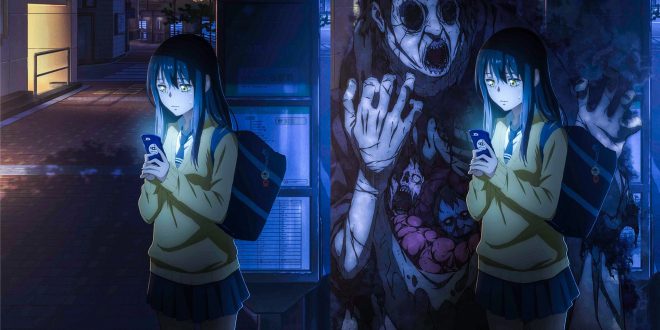
The scene where Miko is queuing in a store with a gigantic, deformed ghostly figure standing right next to her is both comedic and unsettling. While the series may seem to take a light-hearted approach to horror, thanks to its comedic elements, it hides a deeper meaning. Miko's choice to act as if she doesn't see the ghosts becomes a metaphor for many people who ignore their own inner demons or life problems, pretending everything is fine. When Miko meets a classmate who also sees ghosts but deals with them differently, it offers an intriguing insight into various methods of coping with difficulties.
Although Mieruko-chan may primarily be seen as a comedy with horror elements, its true power lies in its ability to merge these two genres in a way that both entertains and horrifies. Miko and her daily struggle with the ghosts she tries to overlook poses a question to the viewer: Is it better to see and confront your fears, or to pretend they don't exist and carry on with daily life? Thus, Mieruko-chan is not just captivating entertainment but also a profound reflection on the human experience.
Animation vs. Live-Action: An Analysis of Horrors
Both animated and live-action films aim to immerse the viewer in a world filled with tension and fear. However, the manner in which they achieve this varies based on the medium. Live-action films rely on a realistic portrayal of scenes, authentic actor reactions, and the use of real locations or special effects, adding depth and authenticity to the experienced dread. In contrast, anime banks on stylization and exaggeration, allowing creators to manipulate reality in ways harder to achieve in live-action films.
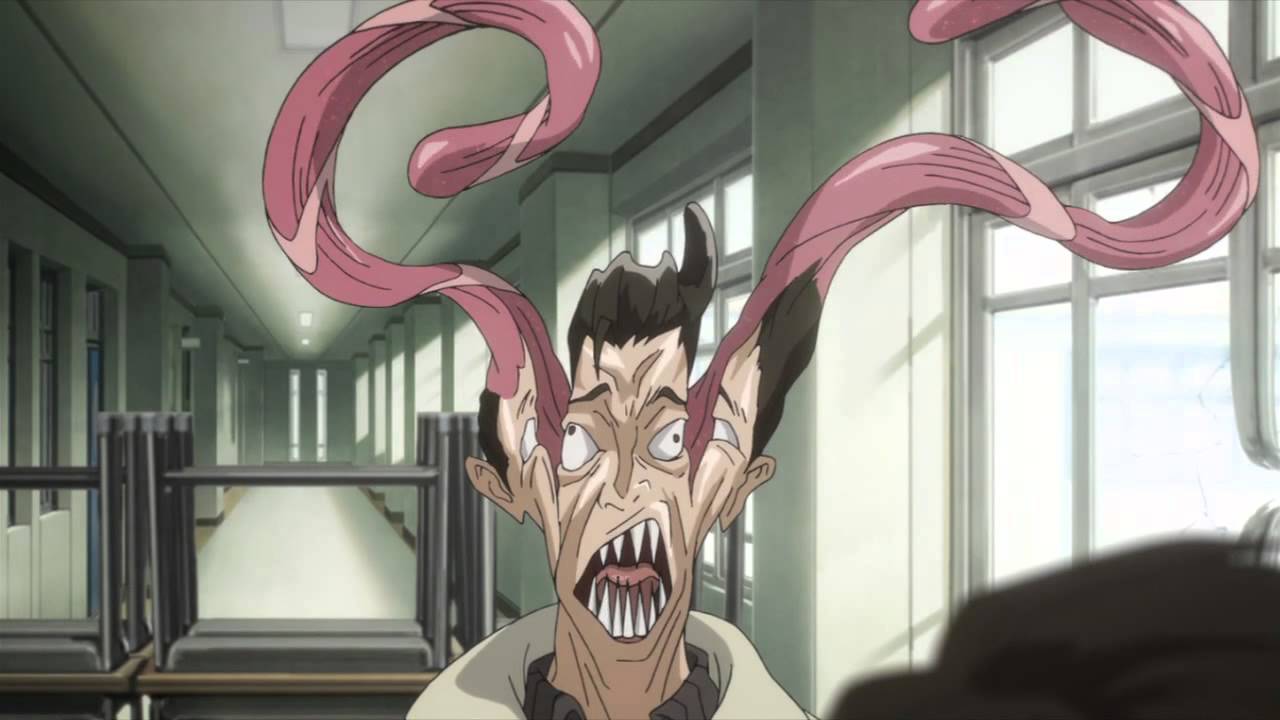
An intriguing phenomenon is how each medium engages the human psyche. Live-action films often rely on human empathy towards real characters, leveraging the fact that we can identify with them on a real-world level. Meanwhile, although anime doesn't offer a realistic depiction of people, it can delve deeper into the human psyche, exploring more abstract and symbolic fears. This allows for scenes that would be impossible in traditional films – like characters experiencing nightmares in surreal, unrepresentable worlds.
In this manner, anime can tap into deeply concealed, subconscious fears, while live-action films engage us in a more tangible, direct way. Ultimately, both approaches hold immense power in eliciting fear but draw from different facets of human psychology to achieve it.
Exploring New Ways to Frighten
Anime horror continuously pushes the boundaries of our imagination, introducing us to realms of fear often left unexplored in traditional live-action films. Thanks to the unique nature of animation, creators can immerse viewers in worlds full of dark dreams, surreal nightmares, and deeply-rooted human anxieties. Every element – from the soundtrack, lighting, to the storyline – is meticulously employed to craft horrifying yet captivating tales.
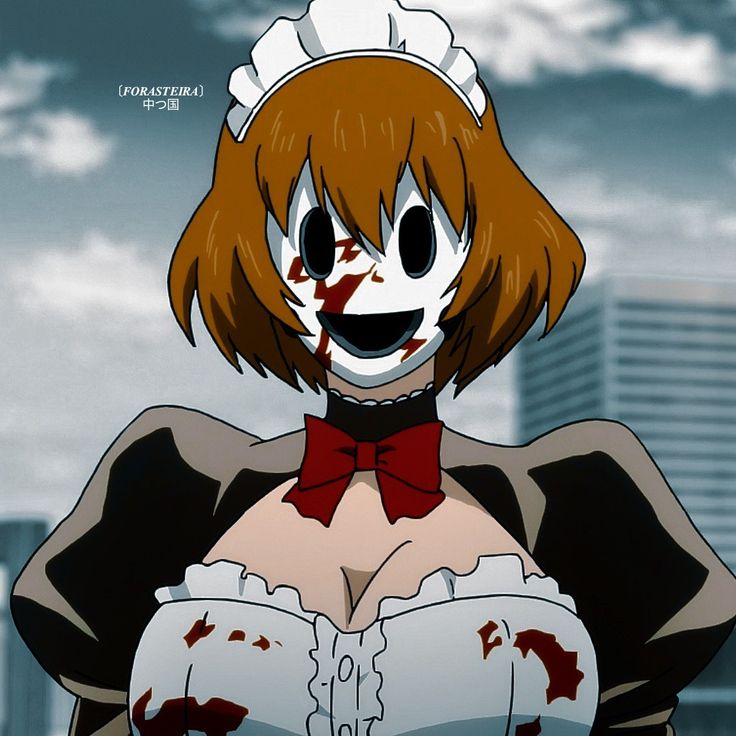
"Strong Japanese Women"
see book by the author
of the page
未開 ソビエライ
An enthusiast of Asian culture with a deep appreciation for the diverse philosophies of the world. By education, a psychologist and philologist specializing in Korean studies. At heart, a programmer (primarily for Android) and a passionate technology enthusiast, as well as a practitioner of Zen and mono no aware. In moments of tranquility, adheres to a disciplined lifestyle, firmly believing that perseverance, continuous personal growth, and dedication to one's passions are the wisest paths in life. Author of the book "Strong Women of Japan" (>>see more)
Personal motto:
"The most powerful force in the universe is compound interest." - Albert Einstein (probably)
Mike Soray
(aka Michał Sobieraj)
未開 ソビエライ
An enthusiast of Asian culture with a deep appreciation for the diverse philosophies of the world. By education, a psychologist and philologist specializing in Korean studies. At heart, a programmer (primarily for Android) and a passionate technology enthusiast, as well as a practitioner of Zen and mono no aware. In moments of tranquility, adheres to a disciplined lifestyle, firmly believing that perseverance, continuous personal growth, and dedication to one's passions are the wisest paths in life. Author of the book "Strong Women of Japan" (>>see more)
Personal motto:
"The most powerful force in the universe is compound interest." - Albert Einstein (probably)
Mike Soray
(aka Michał Sobieraj)
Write us...
Ciechanów, Polska
dr.imyon@gmail.com
___________________
inari.smart
Would you like to share your thoughts or feedback about our website or app? Leave us a message, and we’ll get back to you quickly. We value your perspective!
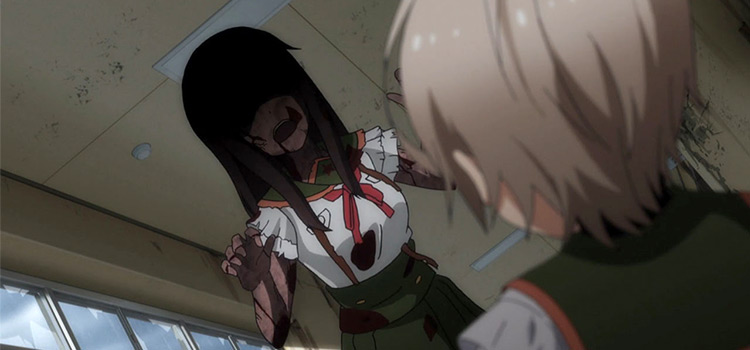 The Security Quandary:
The Security Quandary: 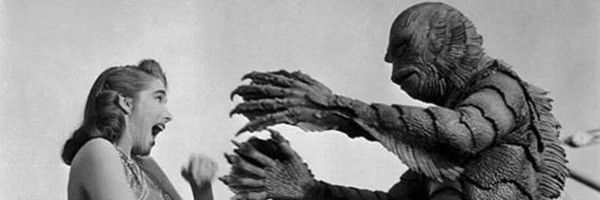
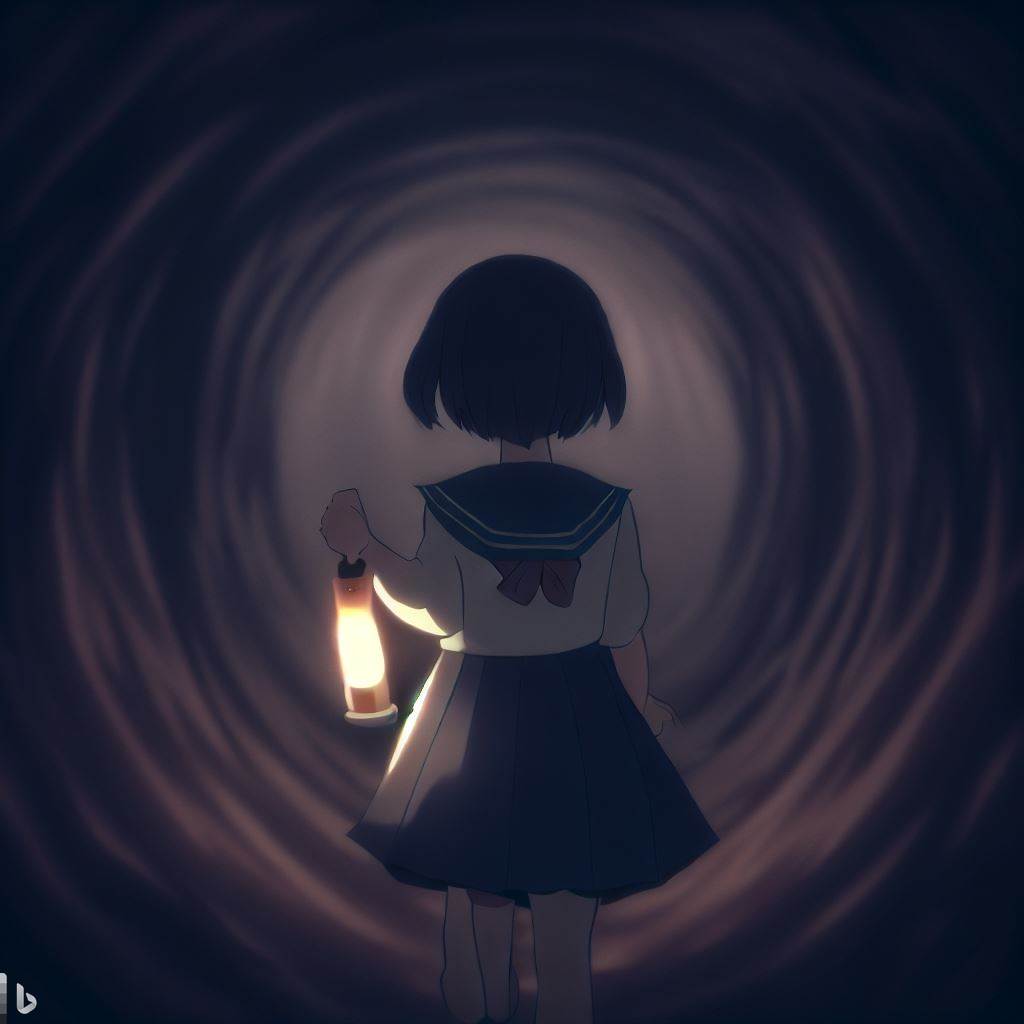 Atmosphere - The Essence of Unease: In horror anime, atmosphere plays a pivotal role in inducing a sense of dread. Thanks to its versatility, animations have the capability to create dreamlike landscapes and shadowy settings, challenging to reproduce in conventional films. Sound and music, when well-composed, can render even the simplest of scenes unsettling. It's not just about the overtly horrifying sounds or background screams; subtle undertones, the creak of floors, or the rustling of leaves can accentuate uncertainty. Setting and lighting in animation can emphasize the grim ambiance, giving the viewer a sense that something sinister might lurk in the shadows.
Atmosphere - The Essence of Unease: In horror anime, atmosphere plays a pivotal role in inducing a sense of dread. Thanks to its versatility, animations have the capability to create dreamlike landscapes and shadowy settings, challenging to reproduce in conventional films. Sound and music, when well-composed, can render even the simplest of scenes unsettling. It's not just about the overtly horrifying sounds or background screams; subtle undertones, the creak of floors, or the rustling of leaves can accentuate uncertainty. Setting and lighting in animation can emphasize the grim ambiance, giving the viewer a sense that something sinister might lurk in the shadows. 